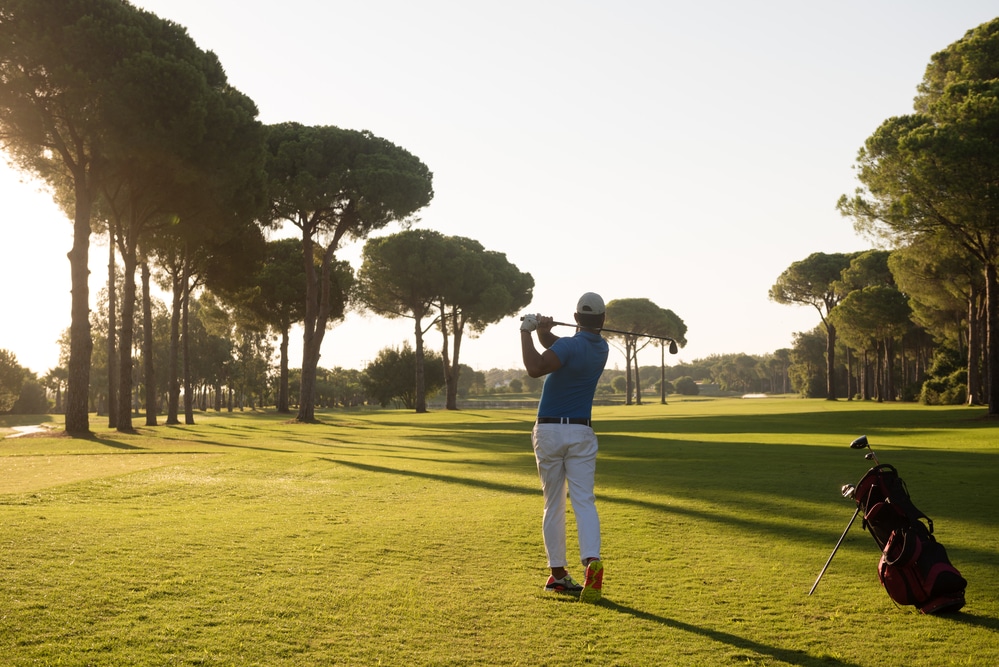Last Updated on November 9, 2023
Golf is an incredibly difficult game that can drive even the most experienced players to frustration. Many golfers find themselves facing a dreaded hook – and it’s not just because of their bad luck. There are several common causes of a hook in golf, ranging from physical mistakes to mental missteps. So if you’re tired of slicing your shots, read on for some tips on how to avoid causing this pesky problem while improving your game overall. From over-rotation to improper weight distribution and mastering the mental game, learn what really causes a hook in golf and get back out there with confidence.
Table of Contents:
- The Basics of a Hook
- Over-Rotation
- Improper Weight Distribution
- Frequently Asked Questions
- Conclusion
The Basics of a Hook
A hook is a type of shot in golf that curves to the left (for right-handed players). It’s an undesirable shot because it reduces accuracy and distance. The ball will travel further when hit straight, so avoiding hooks is essential for good golfing performance.
The cause of a hook can be divided into two categories: physical and mental. Physical causes include over-rotation and improper weight distribution. Mental causes include fear or lack of focus on the task at hand.
Over-Rotation
Over-rotation is a common issue for golfers, and it can cause a hook. This happens when the golfer’s body rotates too far during their swing, causing them to lose control of the clubface. As a result, they hit the ball with an open face, resulting in a hooked shot.
The key to correcting this problem is understanding how over-rotation affects your swing and what you can do to prevent it from happening. Here are some tips:
1. Make sure your grip is correct – A good grip will help ensure that you don’t rotate too much during your swing. It should be firm but not overly tight so that you have enough flexibility to move freely without rotating excessively.
2. Focus on keeping your head still – Keeping your head still throughout the entire swing helps keep everything else in check as well. When you start moving around too much, it’s easy for things like over-rotation to happen because all of those small movements add up quickly and can throw off your balance and timing.
3. Practising drills – Practising drills such as “one piece takeaway” or “slow motion swings” can be beneficial to ingrain proper technique into muscle memory. This way, when out on the course, it becomes second nature and less likely for errors like over-rotation to occur due to a lack of focus or concentration lapses while playing under pressure situations.
4. Keep arms connected – Connecting both arms together through impact helps maintain balance by preventing excessive rotation from occurring during the downswing, which could lead to hooks if left unchecked.
5. Check alignment – Making sure that all parts of your body are aligned correctly at address will also help avoid any unnecessary movement during the backswing, which could lead to issues like over-rotating if left unchecked.
By following these tips and practising regularly, golfers should be able to reduce their chances of hitting hooks caused by over-rotation significantly. This will help them maintain control over the clubface and hit straighter shots with greater accuracy. With practice and dedication, they can improve their game in no time.
Improper Weight Distribution

Improper weight distribution is one of the main causes of a hook in golf. When your weight is not properly distributed, it can cause you to shift too much on your backswing and make contact with the ball off-centre. This results in an exaggerated spin, causing a hook shot.
To prevent this from happening, focus on keeping your head still during the swing and maintaining good posture throughout. Make sure that you are evenly distributing your weight between both feet and shifting slightly forward at address, and then returning to the centre after impact. Additionally, keep your arms close to your body throughout the swing and avoid swaying or over-rotating during the downswing.
Another way to ensure proper weight distribution is by using a weighted club during practice swings or drills before hitting actual shots on the course. Doing so helps build muscle memory for correct movement patterns while also helping you feel where you should be placing most of your weight when swinging through impact with an unweighted club.
Frequently Asked Questions
How do you fix a golf hook?
To fix this, you need to adjust your grip and stance. First, ensure your hands are slightly ahead of the ball at address. Then, open up your stance by turning your front foot outwards, so it points towards the target line. Finally, focus on swinging along the target line rather than across it. This will help ensure you stay in control of the clubface throughout the swing and avoid slicing or hooking shots. With practice and patience, these adjustments should lead to straighter drives off the tee.
How to stop a golf ball from hooking?
To stop your golf ball from hooking, you need to focus on two key elements: swing path and clubface angle. Your swing path should be slightly inside-out, meaning that the clubhead should travel along an arc from the inside of the target line to the outside at impact. Additionally, make sure that your clubface is square or slightly open at impact for it to travel straight down the target line. Finally, ensure that you are making a full shoulder turn throughout your backswing and follow through so that you can maintain control over both your swing path and clubface angle. With practice and patience, these tips will help keep your golf ball from hooking.
What swing path causes a hook?
This happens when the clubface is open relative to the swing path at impact. The swing path should be slightly from inside to outside, meaning it starts on an inside line and finishes on an outside line. If the swing path is too far from inside to outside, or if it’s too flat, then this can cause a hook. A good drill for avoiding hooks is to focus on swinging in more of an arc shape rather than straight back and through. This will help keep the clubface square to the swing path and avoid a hook.
How do I stop hitting hooks with my irons?
Hitting hooks with your irons can be a frustrating issue to tackle. To help stop this, you should focus on making sure your swing is square at impact. This means that the clubface should be perpendicular to the target line and parallel to the ground when it strikes the ball. Additionally, ensure that your grip pressure is light and consistent throughout your swing, as too much tension can cause an open clubface at impact. Finally, practice regularly and pay attention to how you’re swinging to identify any flaws or inconsistencies in technique which could be causing hooks. With these tips in mind, you’ll soon have those hooks under control.
Conclusion
In conclusion, understanding the causes of a hook in golf is key to improving your game. Knowing what can cause you to hit a hook and how to prevent it will help you get better results on the course. Whether it’s over-rotation, improper weight distribution or even something as simple as your mental game, being aware of these issues can help you avoid them and improve your overall performance. With practice and dedication, anyone can become an expert at avoiding hooks when playing golf.


